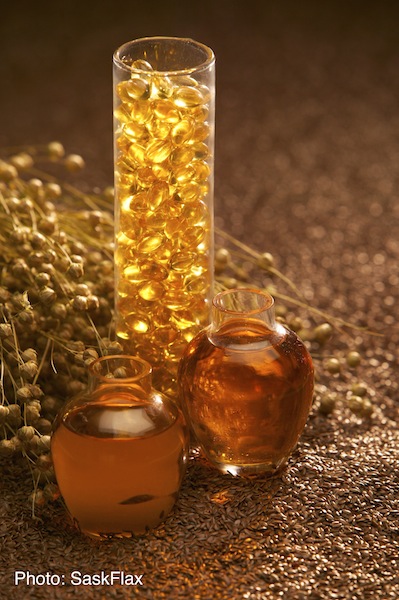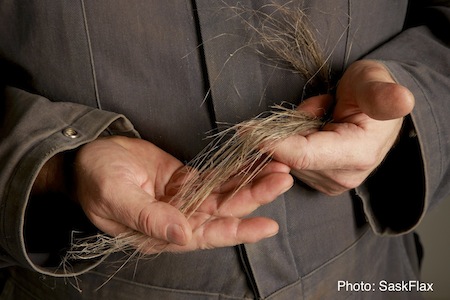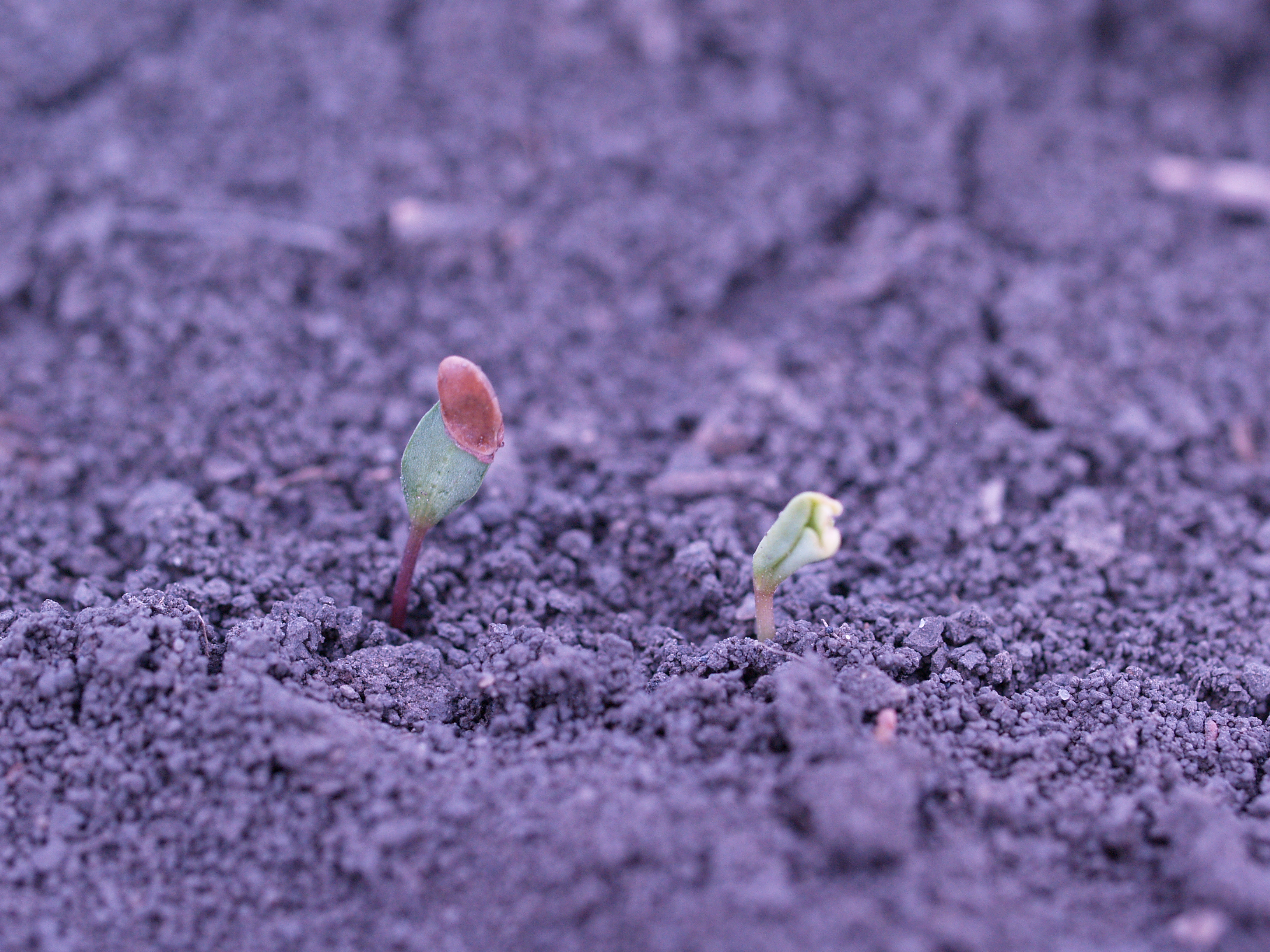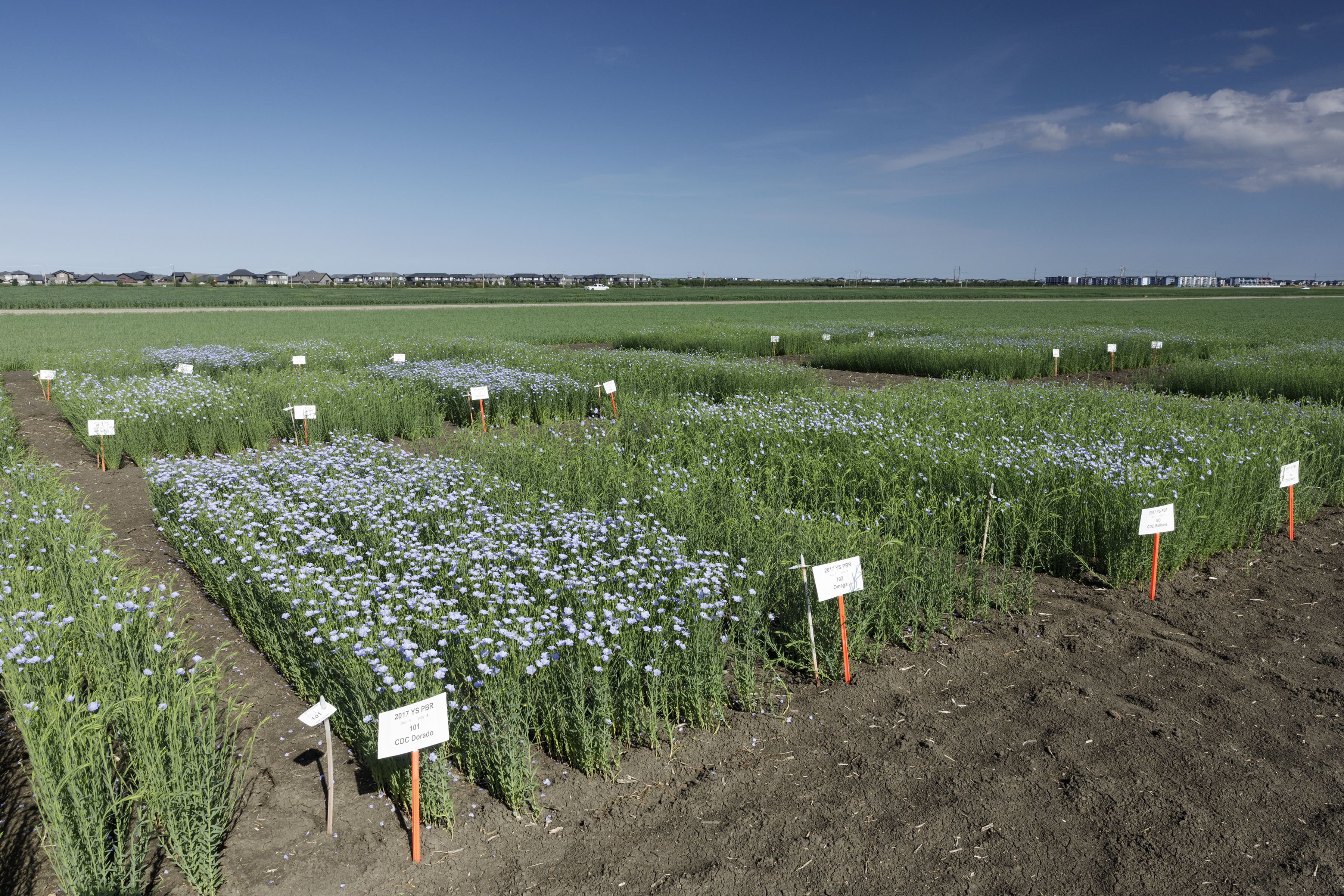All about flax
What is flax used for?

Flax seeds contain 45-50% oil. This oil is primarily used in industrial products such as paint, varnishes and flooring products (linoleum). The majority of flax seed is used for this purpose. The seed meal remaining after the extraction of the oil is used in animal feed.
Flaxseed is increasingly being used for human consumption because it is high in fibre, protein and oil content. The oil contains mainly mono- and polyunsaturated fatty acids and has large amounts of polyunsaturated linolenic fatty acid. Furthermore, flax seeds have a high lignan content, which is thought to have health benefits. The presence of these compounds means that flaxseed is widely used in health foods.
Flax stems can also used for the production of fibres. Linen (cloth woven from flax fibres) was one of the most widely used textiles in the Old World. The use of flax fibres in clothing has been surpassed by the widespread use of cotton, however it is starting find industrial uses, such as replacing glass fibres in composites used for automobile and plane interior panels or even in insulation.

Flax biology

Botanical name = Linum usitatissimum L.
Annual, long day plant
Grows up to 1.5m in height
Seed yield: 1.8-2.2 t per ha (about 32 bu/ac)
Seed composition: greater than 45% oil
Bast fibres: phloem fibres with thickened cell walls. Individual fibre cells are 12-16μm in diameter and 25-150mm long. The bundles of fibre cells used in textiles and other fibre products can be 50-100cm long
Flax Uses

As an oilseed
- For human consumption: more than 50% of the fatty acids is flaxseed is the omega-3 polyunsaturated fatty acid, linolenic acid (18C:3). Additionally, flax seeds are high in fibre.
- In industry: used in paints and the manufacture of linoleum. Also used as a wood preservative as it is a hardening oil (due to the high degree of polyunsaturation)
- As animal feed: seed meal left over after oil has been extracted is used as feed. Flax seed meal has a good balance of essential amino acids
As fibre
- Bast fibres are been used to produce linen. Some evidence suggests that flax may have been used in clothing as long ago as 30 000 years BCE.
- Modern uses include use as the reinforcing structure of biocomposites and geotextiles
Flax in agriculture
Flax is one of the oldest cultivated crops, its use in agriculture dates back approximately 7000 years.
Flax is grown world-wide. The center of origin is thought to be in the middle east. In addition to this there are thought to be three or more centers of diversity for flax.
Canada's only dual-purpose crop grown for its seed and stem fibre.

CDC Flax Breeder, Helen Booker, walking flax plots
Flax in Saskatchewan (source: Statistics Canada)
Saskatchewan accounted for 82% of production in 2017.
Saskatchewan seeded 364 200 hectares of flax in 2017, producing 447, 600 tonnes of flaxseed.
Canada produced 548, 200 tonnes of flaxseed in 2017.
Saskatchewan alone produces about 25% of the global supply of flaxseed.

Plant Breeder's Rights plots at Kernen Crop Research Farm, July 2017.

